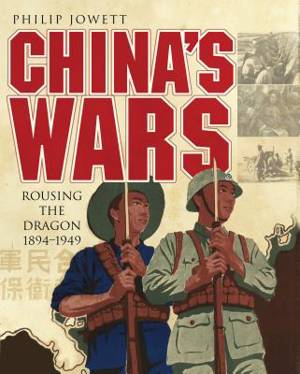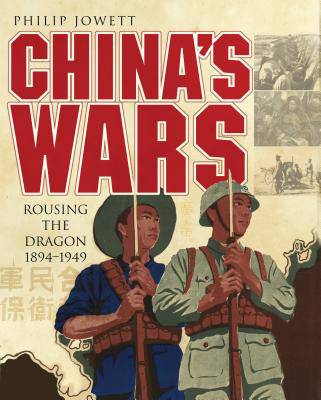
- Retrait gratuit dans votre magasin Club
- 7.000.000 titres dans notre catalogue
- Payer en toute sécurité
- Toujours un magasin près de chez vous
- Retrait gratuit dans votre magasin Club
- 7.000.0000 titres dans notre catalogue
- Payer en toute sécurité
- Toujours un magasin près de chez vous
Description
By the end of the first decade of the 21st century, China had become one of the great powers of the modern world. Economically, politically, and militarily, its power and international reach is only exceeded by the United States, the world's one remaining superpower.
Its military spending, though dwarfed by the United States, is over $100 billion a year and it is busy developing an aircraft carrier, a stealth fighter jet, and missiles that can shoot down satellites - all in an effort to project its power on a global scale.
This is all a far cry from its position at the end of the 19th century, when it was a ramshackle and isolated medieval empire upon whom the European colonial powers could impose their wishes at will. The period from the First Sino-Japanese War of 1894-95 through to the Communist victory in the Chinese Civil War ending in 1949 was one of near-constant conflict that saw China emerge as a fledgling new world power. Militarily at least, this is the defining period in Chinese history.
This is the period that saw the breakdown of the traditional imperial system of control, under threat from a series of rebellions throughout the 19th century, and the rise of the warlords and civil war in 1911. Despite the establishment of the Republic of China in 1912, the country was still riven by internal strife as different factions sought to control the fledgling state, while much of the power in the land was exercised by regional warlords in a constant state of conflict with one another. The 1920s saw the rise of two opposing revolutionary movements, the Kuomintang, led first by Sun Yat-Sen and later Chiang Kai-Shek, and the Chinese Communist Party, one of whose early leaders was Mao Tse-Tung. The Kuomintang managed to gain control of the majority of China by the late 1920s, and started a long running conflict with the Communists at the same time. The late 1920s also saw the first significant Japanese intervention in China, and in 1931 the Japanese took control of the whole of Manchuria. By 1937 this had escalated into out and out conflict with the Chinese, a conflict which would last till the Japanese defeat in World War II in 1945. Even then China had to struggle through four years of painful civil war before the Chinese Communist Party finally established control in 1949.
In this new study Philip Jowett traces the complicated military history of China during these pivotal years, describing in detail the conflicts that forge the modern superpower that is China today.
Spécifications
Parties prenantes
- Auteur(s) :
- Editeur:
Contenu
- Nombre de pages :
- 408
- Langue:
- Anglais
- Collection :
Caractéristiques
- EAN:
- 9781782004073
- Date de parution :
- 19-11-13
- Format:
- Livre relié
- Format numérique:
- Genaaid
- Dimensions :
- 198 mm x 249 mm
- Poids :
- 1587 g

Les avis
Nous publions uniquement les avis qui respectent les conditions requises. Consultez nos conditions pour les avis.






